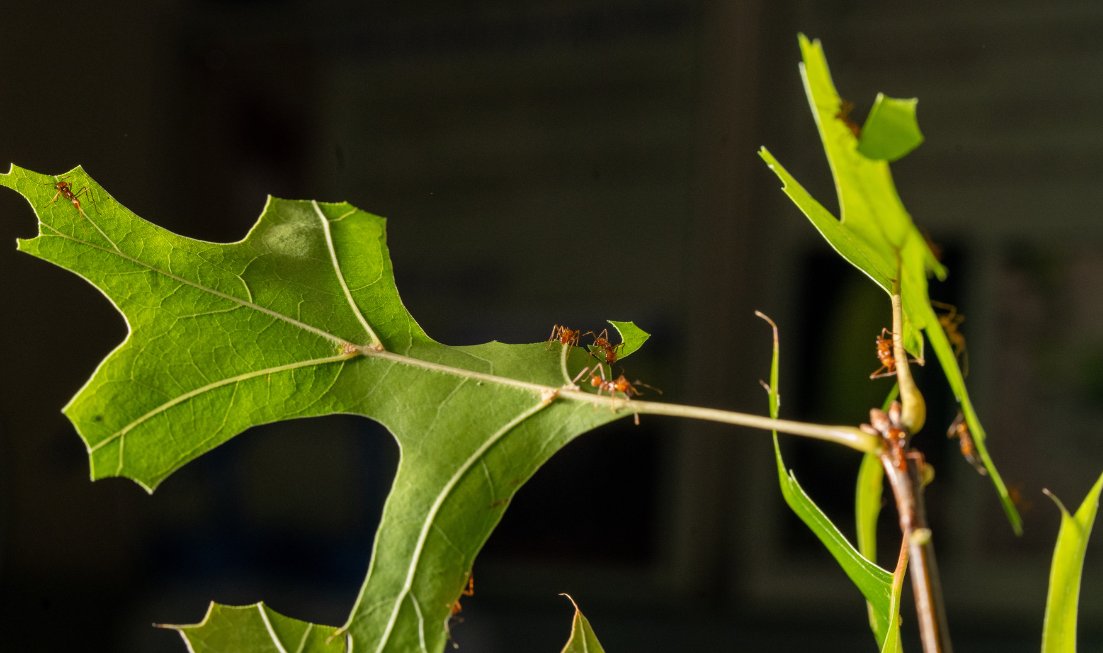The ‘ant’ in antibiotic discovery: How insects could be the key to fighting superbugs

Cameron Currie and his research team are studying a novel source of possible antimicrobial drugs: The bacteria that work with fungus-growing ants to protect their gardens from disease. (Photo by Georgia Kirkos, McMaster University)
BY Blake Dillon
November 19, 2024
A McMaster researcher is studying an eons-old relationship between ants, fungi, and bacteria in a quest for new drugs to combat antimicrobial resistance, one of the biggest threats to global public health.
Cameron Currie, a professor in the department of Biochemistry & Biomedical Sciences, studies fungus-growing ants, which tend vast gardens of fungus grown specifically as a food source.
“Just like human farmers, they have major problems with disease,” he says.
To fight disease, the ants have teamed up with bacteria that secrete potent antimicrobial chemicals, which protect their fungus gardens from infection.
The bacteria get a nutrient-dense place to live, and the ants get disease-free crops. “It’s symbiosis,” Currie says.
And these chemicals offer researchers a vast new space to explore in search of new antimicrobial drugs.
“When we look at traditional sources of antibiotics, which are mostly soil microorganisms, we keep finding already-known chemistry,” says Currie, the Stephen A. Jarislowsky Chair in Pandemic Research and Prevention, and a member of the Michael G. DeGroote Institute for Infectious Disease Research.
“Finding new chemistry space is an important component of discovering new drugs.”
Currie and his research team will travel to Panama, Costa Rica, Brazil and Argentina, where these ants live.
There, they will collect ant and colony samples, bring them back to McMaster and re-establish them as functioning colonies in Currie’s lab.
From there, researchers will scrape traces of the chemical-producing bacteria from the bodies of ants, and grow it in large scale to produce the same chemicals that protect the ants’ fungal gardens.
It’s a long, complicated process, but an individual strain of the bacteria associated with fungus-growing ants has the capacity to produce as many as 25 antimicrobial compounds, Currie says.
“We hope that some of the antibiotics that we’re discovering from ant systems will eventually reach the clinic and treat infectious disease,” Currie says.
About Antimicrobial resistance and drug discovery
Antimicrobial drugs are used treat infections caused by microbes, like bacteria, viruses and fungi. But, over time, microbes evolve and can develop ways to resist such drugs, a phenomenon called antimicrobial resistance or AMR that is a major global public health threat.
One essential way to combat AMR is to discover new antimicrobials, such as antibiotics or antifungals. McMaster researchers are deploying a range of tactics in the search for new drugs, including natural product screens, artificial intelligence approaches and studying molecular mechanisms.
Nov. 18-24 is World AMR Awareness Week. Learn more via the World Health Organization.


